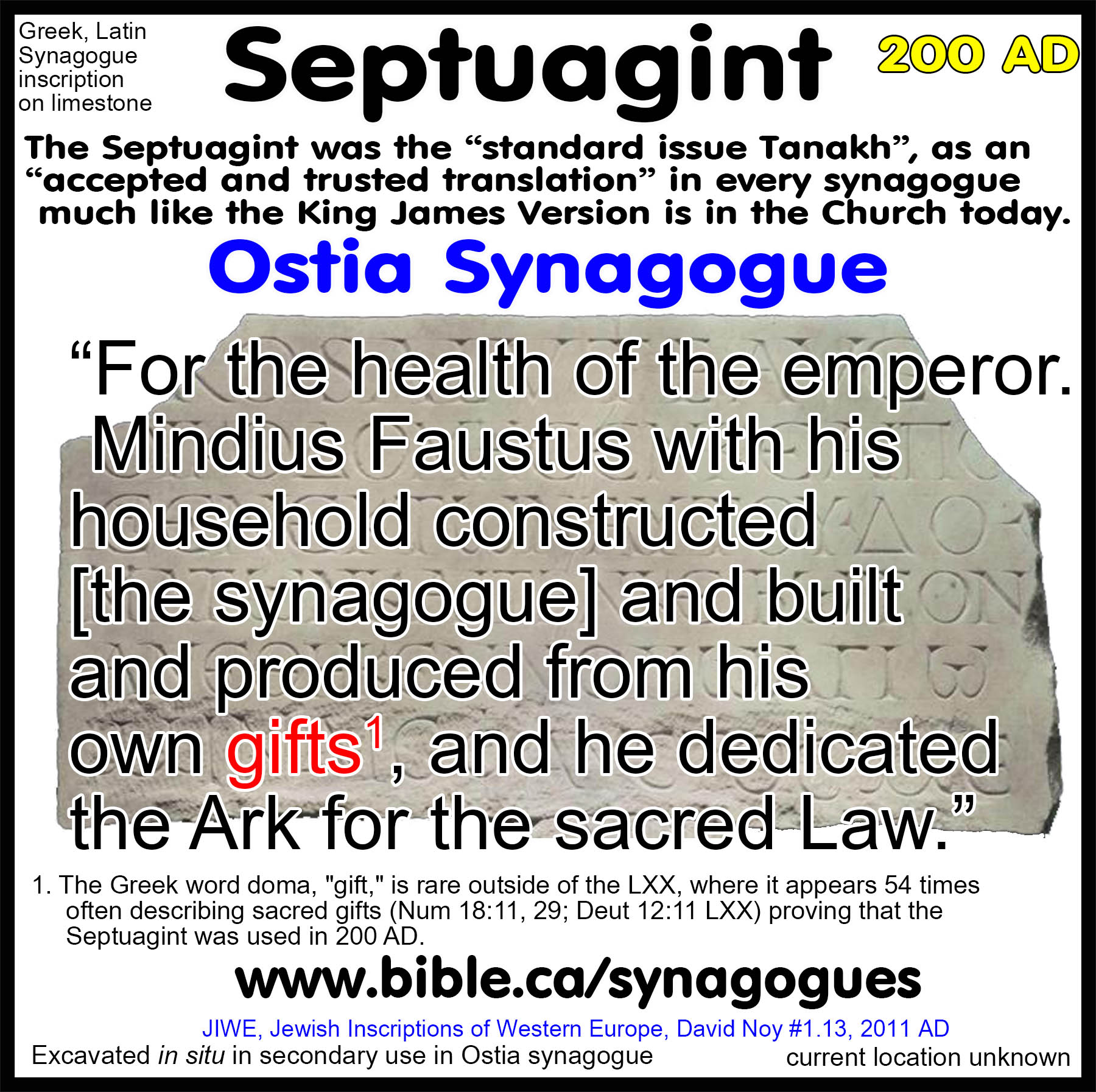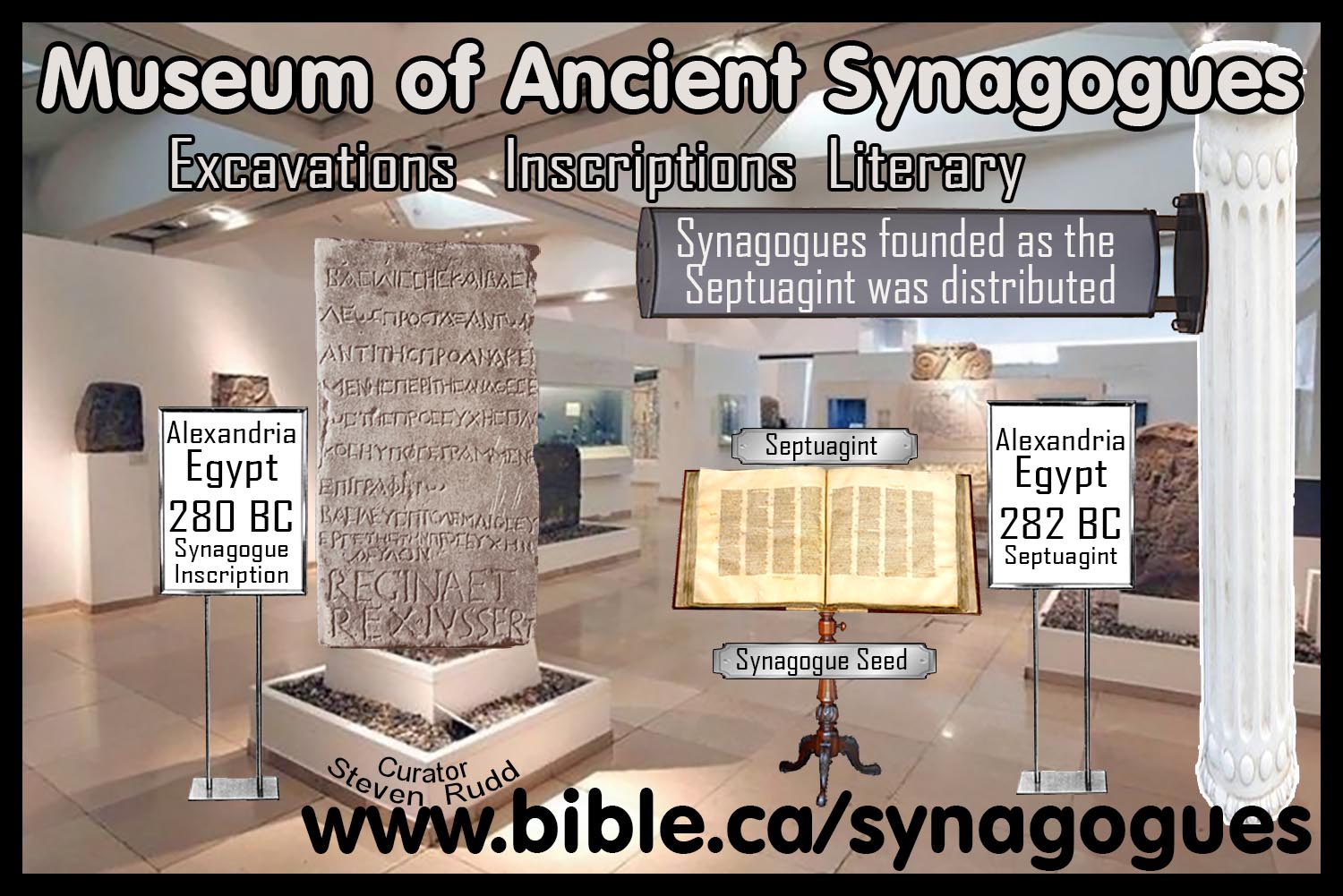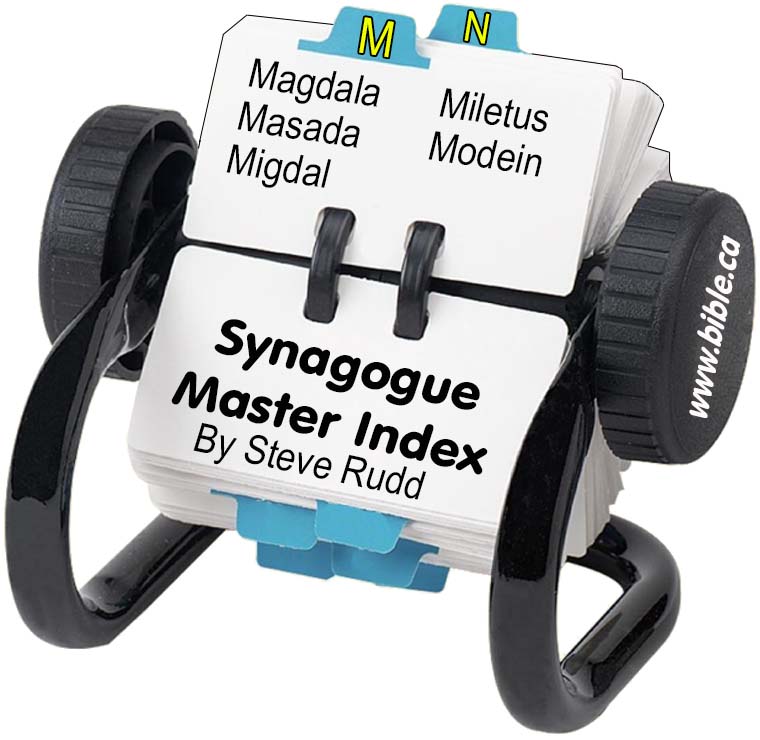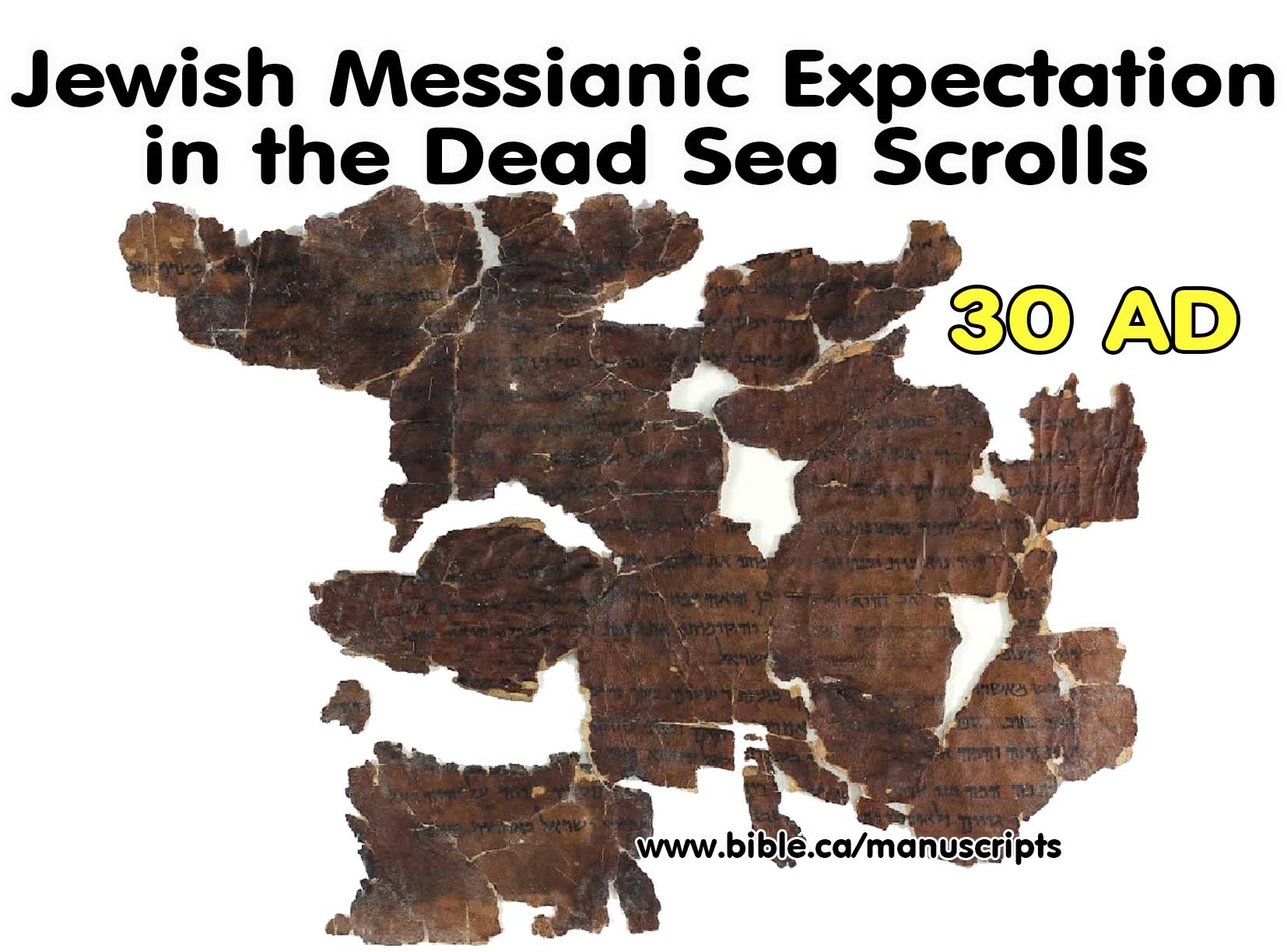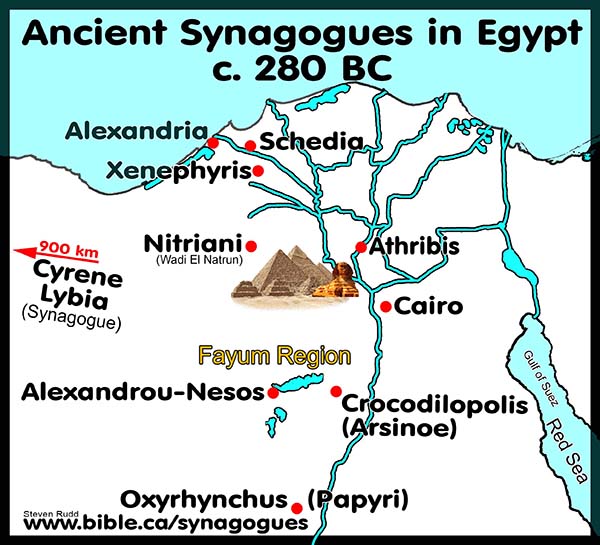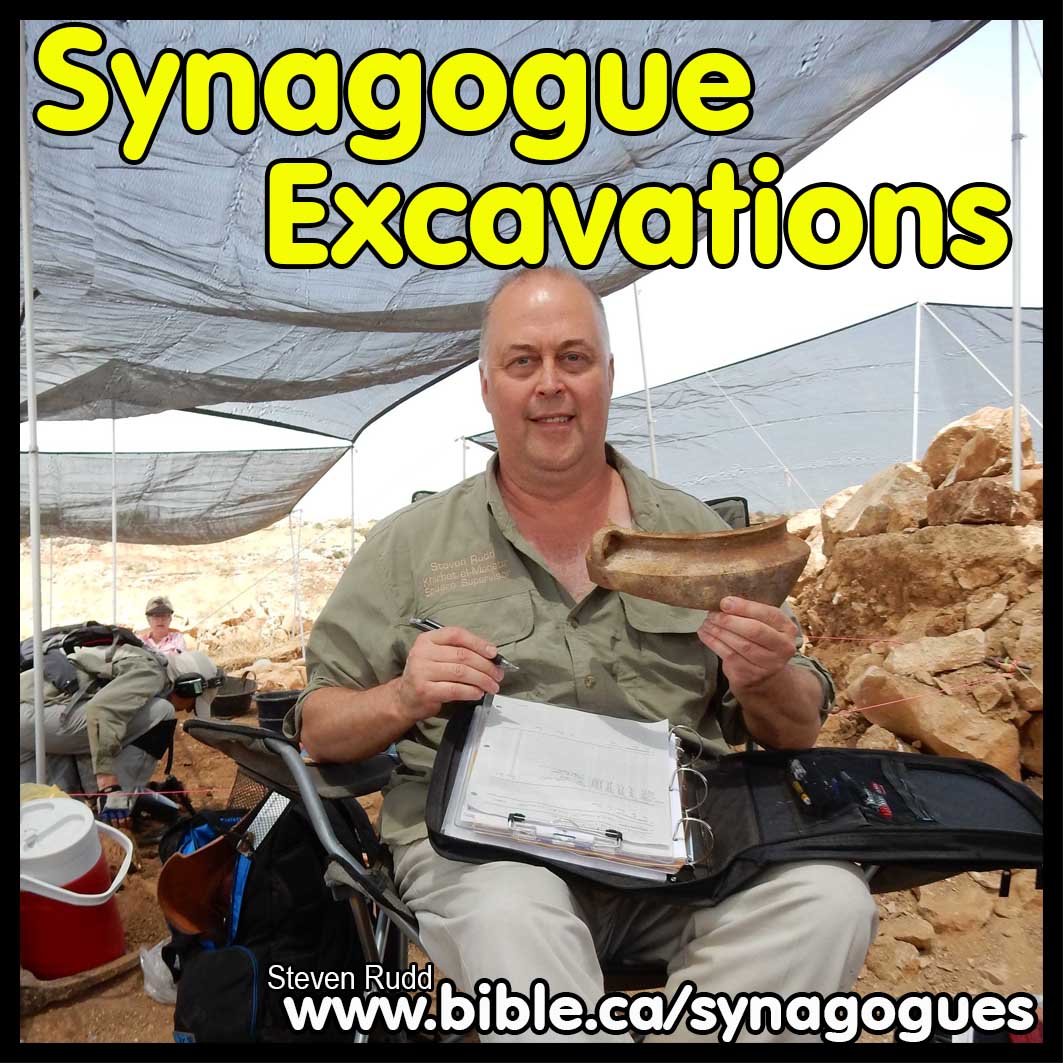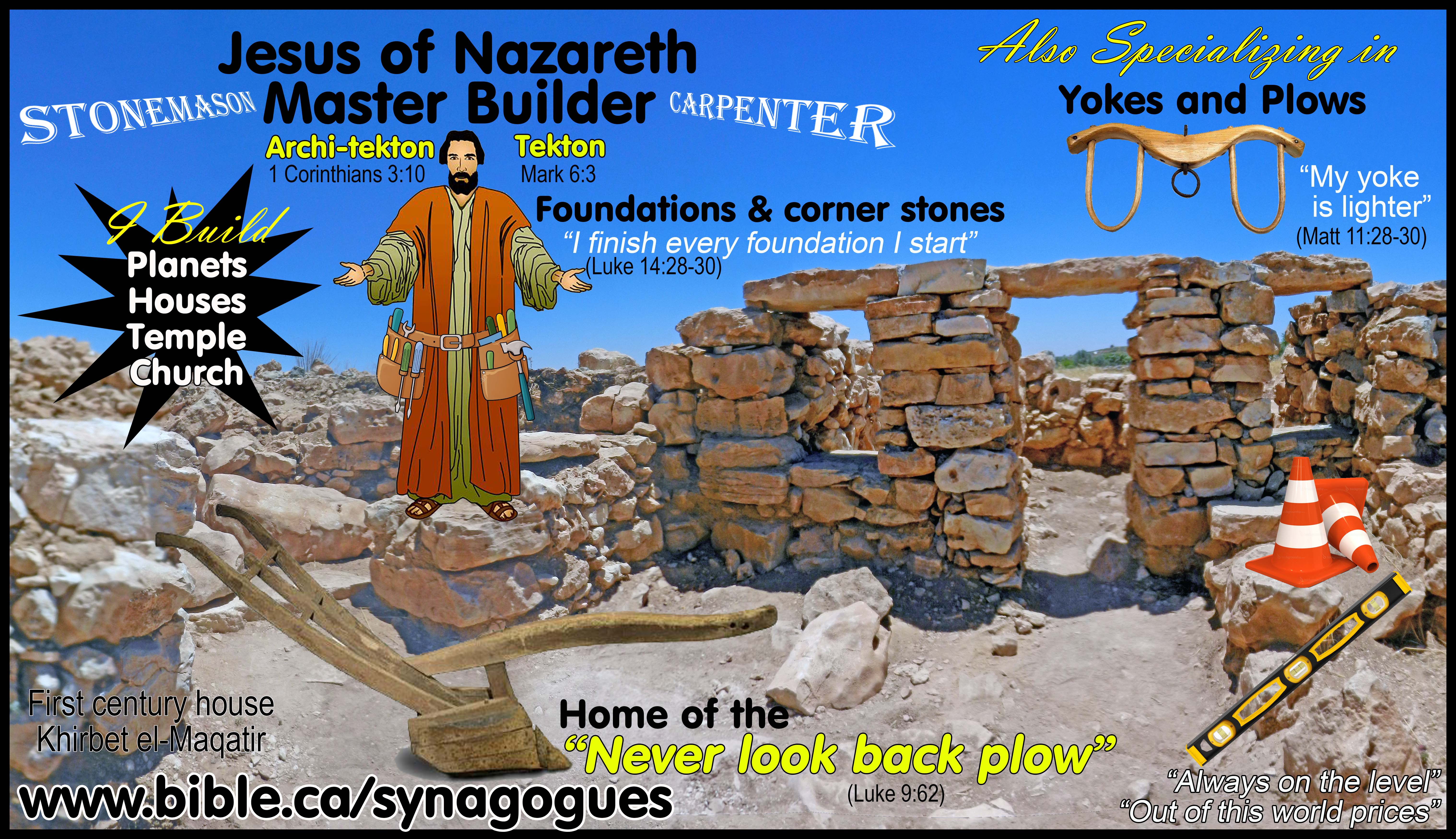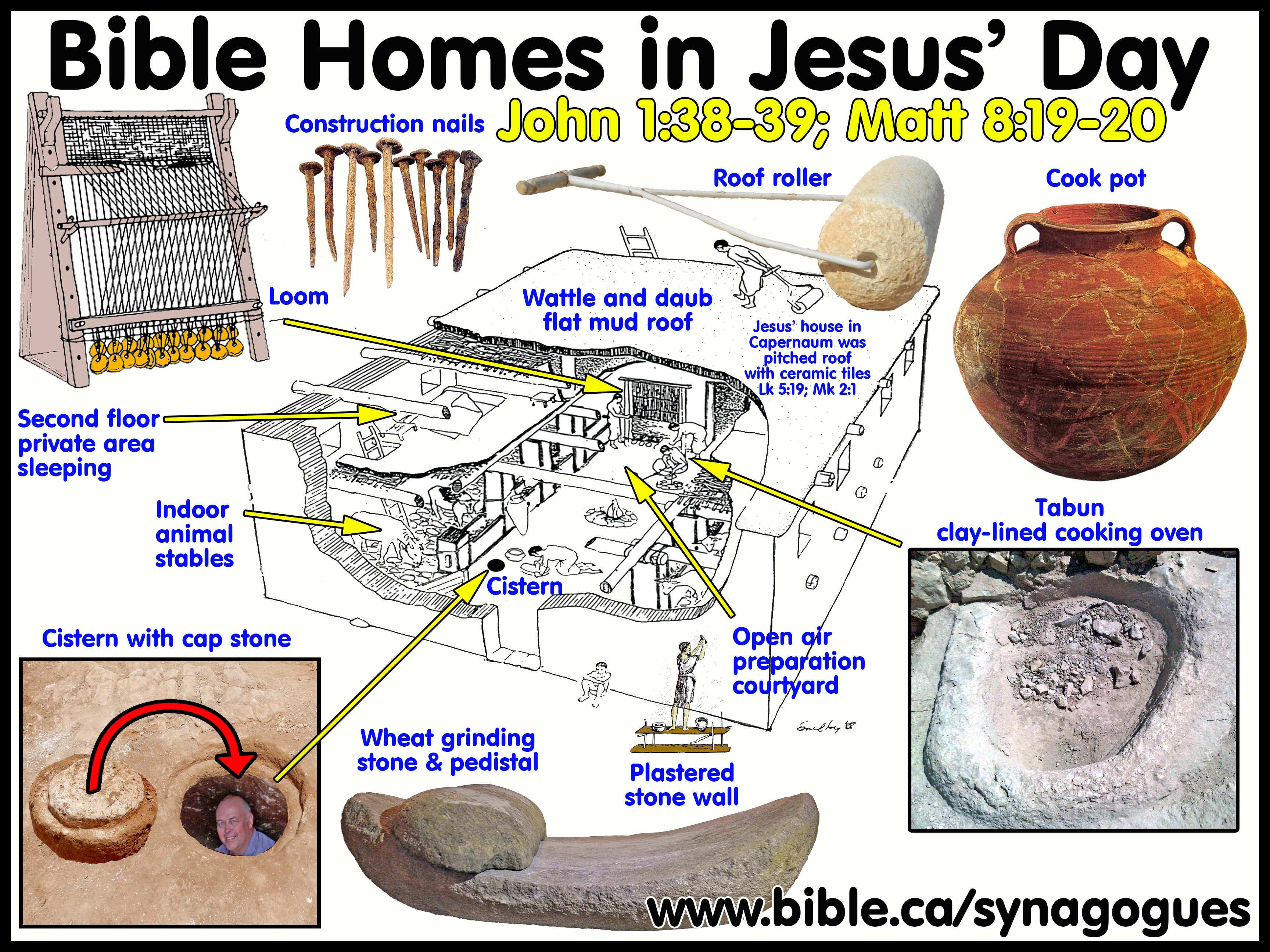Ancient Synagogue Inscription from Ostia, Italy: 200 AD
Synagogue Inscriptions from the Oldest Synagogues in the world
|
Ostia, Seaport of Rome, Italy: 200 AD |
A. Synagogue Inscription:
1. Inscription text: “For the health of the emperor. Mindius Faustus with his household constructed [the synagogue] and built and produced from his own gifts1, and he dedicated the ark for the sacred Law”
2. Glyptic Artifact: First two lines Latin and Greek Synagogue text on limestone
3. Provenance: Excavated in situ in secondary use in Ostia synagogue.
4. Current location: unable to determine current location.
5. Synagogue Occupation Date (SOD) = Excavation date + Inscriptional date + Literary date = 50 AD
a. SOD computation system details
b. Excavation date: 50 AD
c. Inscriptional date: 200 AD
d. Literary date: None
6. References:
a. JIWE: Jewish Inscriptions of Western Europe, David Noy #1.13, 2011 AD
7. Related Literary references:
a. Gifts = Greek Doma in Septuagint: Num 18:11,29; Deut 12:11, LXX
B. Discussion:
1. The Septuagint was the “King James Version” of the ancient Jewish synagogue as far back as 282 BC.
a. See also: Greek Septuagint: The Standard Tanakh of every ancient synagogue
b. The Septuagint was the “standard issue Tanakh”, as an “accepted and trusted translation” in every synagogue much like the King James Version is in the Church today.
c. Hebrew was extinct in Judea at the time of Christ, except for the Jerusalem elites (Sadducees) who ran the temple.
d. The entire diaspora Jewish population from 300 BC spoke Greek and were unable to read Hebrew.
e. As the Septuagint was distributed in 280 BC throughout the world, it spawned synagogues according to its disaposra circulation.
f. See also: Origin: Synagogues originated at Alexandria Egypt in 280 BC spawned by the Septuagint
2. “Recovered in the vestibule of the Ostia synagogue, this discarded inscription was used as part of the flooring in that building's final renovations in the fourth century C.E. The stone dates two centuries earlier, when it recorded the dedication of an unnamed appurtenance of the synagogue. The mention of an ark's erection in line three suggests that this bequest was a wooden pedestal upon which the holy shrine was set. The original gift apparently needed to be replaced a century later, since the initial donor's name was scratched out and "Mindi(u)s Faustus" inscribed over it in letter-forms dating to that period. The construction of an aedicula in the fourth-century renovations would have made such a replacement obsolete, leading to the stone's removal to secondary use. The word doma, "gift," (11. 3-4) is rare outside of the LXX, where it appears fifty-four times, often describing sacred gifts (e.g., Num 18:11, 29; Deut 12:11, LXX). Accordingly, the term exists elsewhere in the epigraphic record only in several fourth-century inscriptions from the synagogue at Sardis (nos. 20-22 in Kroll, "The Greek Inscriptions").” (The Ancient Synagogue from its Origins to 200 AD, Anders Runesson, p223, 2008 AD)
3. “The synagogue inscription from Ostia was found in re-use as a repair tile in the last stages of the building. It was originally cut into the tile near the end of the second century C.E. or the beginning of the third century C.E., that is, about 200 C.E. The first line is in Latin, the remaining six are in Greek, but cut by the same hand, though there is a suggestion that the last two lines containing the name of Mindius Faustus are in a second hand. FOR THE WELL-BEING OF THE EMPEROR. MIND<I>US FAUSTUS ME[…] […]DIO[…] CONSTRUCTED [THE SYNAGOGUE] AND MADE [IT] FROM HIS OWN FUNDS, AND HE DEDICATED THE ARK FOR THE SACRED LAW. The additional “I” in the name Mindius was suggested from the find of the name “Mindius” in other inscriptions in the environs of Ostia. This is a large plaque, about 29 × 54.5 cm., presumably originally installed in a wall. It is noteworthy that the Greek word translated “ark” was evidently already used as a technical term in this inscription.” (The encyclopedia of Judaism, Neusner, Volume 3, Page 1375, 2000 AD)
C. Inscription footnotes:
1. The Greek word doma, "gift," is rare outside of the LXX, where it appears 54 times often describing sacred gifts (Num 18:11, 29; Deut 12:11 LXX) proving that the Septuagint was used in 200 AD.
a. "And this will be for you: firstfruits of their gifts [Greek: doma] from among all the contributions of the children of Israel; to you I have given them and to your sons and your daughters with you as a perpetual ordinance. Every clean person in your household will eat them." (Numbers 18:11, LXX)
b. "From all your gifts [Greek: doma] you will separate out the choice portions for the Lord or from all the firstfruits the consecrated portion from it.’" (Numbers 18:29, LXX)
c. "And it shall be the place, wherever the Lord your God may choose his name to be called there, you shall bring all that I commanded you today: your whole burnt offerings and your sacrifices and your tithes and the first fruits of your hands and all your choicest gifts [Greek: doma] —all that you might vow to God." (Deuteronomy 12:11, LXX)
By Steve Rudd 2017: Contact the author for comments, input or corrections
|
Jesus your messiah is waiting for you to come home! |
|
|
Why not worship with a first century New Testament church near you, that has the same look and feel as the Jewish Synagogue in your own home town. As a Jew, you will find the transition as easy today as it was for the tens of thousands of your forefathers living in Jerusalem 2000 years ago when they believed in Jesus the Nazarene (the branch) as their messiah. It’s time to come home! |
|
By Steve Rudd: Contact the author for comments, input or corrections.
Go to: Main Ancient Synagogue Start Page
